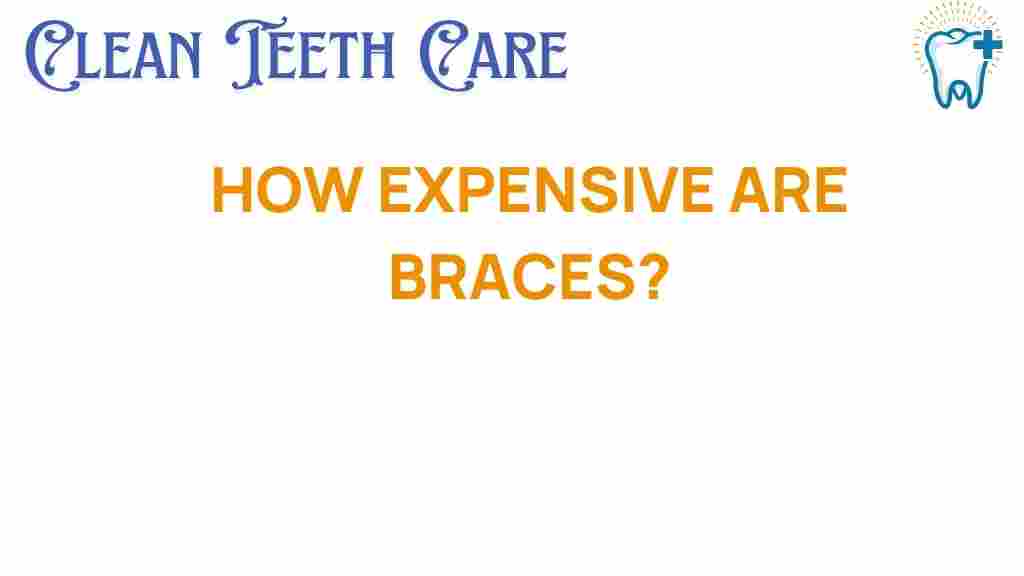Unveiling the True Cost of Braces: Are They Worth It?
Braces have become a common solution for achieving a beautiful smile and improving oral health through proper teeth alignment. However, many potential patients often wonder about the cost of braces and whether investing in orthodontics is truly worth it. In this comprehensive guide, we will explore the various factors influencing the cost of braces, the available payment options, and the long-term benefits of orthodontic treatment.
The Cost of Braces: What to Expect
Understanding the cost of braces is essential for anyone considering orthodontic treatment. The total expense can vary significantly based on several factors, including:
- Type of braces: Metal braces, ceramic braces, lingual braces, and clear aligners all come with different price tags.
- Length of treatment: The duration of your orthodontic treatment will also affect the overall cost.
- Location: Prices may vary depending on the region and the orthodontist’s experience.
- Insurance coverage: If you have dental insurance, it may cover a portion of the costs.
- Hidden fees: Be on the lookout for additional charges that may arise during treatment.
Types of Braces and Their Costs
Different types of braces come with varying costs. Here’s a breakdown of the most common types:
- Metal Braces: These are the most traditional and typically the most affordable option, ranging from $3,000 to $7,000.
- Ceramic Braces: These are less visible and can cost between $4,000 and $8,000.
- Lingual Braces: These are placed on the back of the teeth and are usually more expensive, costing between $8,000 and $10,000.
- Clear Aligners: Brands like Invisalign can range from $3,000 to $8,000 depending on complexity.
Insurance and Payment Plans for Braces
When considering the cost of braces, it’s essential to understand how insurance and payment plans can help manage expenses. Here’s what you need to know:
Understanding Insurance Coverage
Many dental insurance plans offer coverage for orthodontic treatment, but the specifics can vary widely:
- Coverage Limits: Most plans have a lifetime maximum for orthodontic treatment, often ranging from $1,000 to $3,000.
- Age Restrictions: Some plans cover only children or adolescents, while others may also cover adults.
- Pre-approval: Check with your insurance provider to understand what procedures require pre-approval.
Payment Plans and Financing Options
For many, the cost of braces can be daunting. Fortunately, many orthodontists offer flexible payment plans to make treatment more accessible:
- Monthly Payment Plans: Spread the cost over several months or years, making it more manageable.
- Interest-Free Financing: Some clinics offer interest-free financing options.
- Health Savings Accounts (HSAs): Use pre-tax dollars for your orthodontic treatment.
The Long-Term Benefits of Investing in Braces
While the initial cost of braces may seem high, the long-term benefits to your oral health and overall well-being are substantial:
- Improved Oral Health: Proper teeth alignment can reduce the risk of tooth decay, gum disease, and jaw issues.
- Enhanced Aesthetics: A straight smile can boost confidence and self-esteem.
- Better Functionality: Correct alignment improves chewing and speaking abilities.
Hidden Fees to Watch Out For
When budgeting for braces, it’s crucial to consider potential hidden fees that can unexpectedly increase the cost of braces. Here’s what to look out for:
- Consultation Fees: Some orthodontists may charge for initial consultations.
- X-rays and Imaging: Diagnostic imaging might not be included in the initial treatment cost.
- Retainers: Post-treatment retainers are often an additional cost.
- Emergency Visits: If a bracket breaks or if an adjustment is needed, this could incur extra charges.
Step-by-Step Process: Getting Braces
If you’ve decided to invest in braces, here’s a step-by-step guide to the process:
Step 1: Initial Consultation
Schedule an appointment with an orthodontist. They will assess your teeth and discuss treatment options, including the cost of braces.
Step 2: Treatment Plan
Once you decide on the type of braces, the orthodontist will create a personalized treatment plan. This plan will outline the expected duration and costs.
Step 3: Fitting the Braces
The next visit will involve fitting the braces. This can take a couple of hours, and you’ll receive instructions on how to care for them.
Step 4: Regular Adjustments
You will need to return to the orthodontist every 4-6 weeks for adjustments. This is crucial for effective treatment.
Step 5: Retainers
After your braces are removed, you will likely need to wear a retainer to maintain your newly aligned teeth.
Troubleshooting Common Issues with Braces
While wearing braces, you may encounter some common issues. Here are some troubleshooting tips:
- Loose Brackets: If a bracket comes loose, contact your orthodontist for advice on whether to wait for an appointment or visit sooner.
- Wire Irritation: Use orthodontic wax to cover any wires that are irritating your cheeks or gums.
- Food Restrictions: Avoid hard, sticky, or chewy foods that can damage your braces.
Conclusion: Are Braces Worth the Investment?
Ultimately, the decision to get braces is a personal one, influenced by the cost of braces, insurance coverage, and the potential benefits for your oral health. While the initial investment can be significant, the long-term improvements in dental health, functionality, and confidence can make braces a worthwhile endeavor.
If you’re considering braces, consult with an orthodontist to get a clearer picture of the expected cost of braces, payment options, and the overall process. Investing in your smile is an investment in your future health and happiness.
For more information on dental care and orthodontic treatments, visit the American Association of Orthodontists. To learn about financing options, check out our payment plans.
This article is in the category Treatments and created by CleanTeethCare Team
